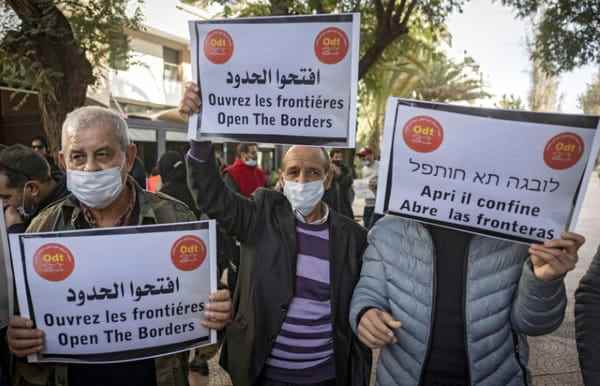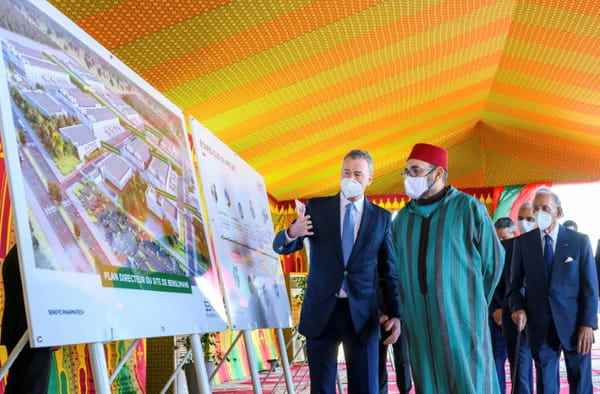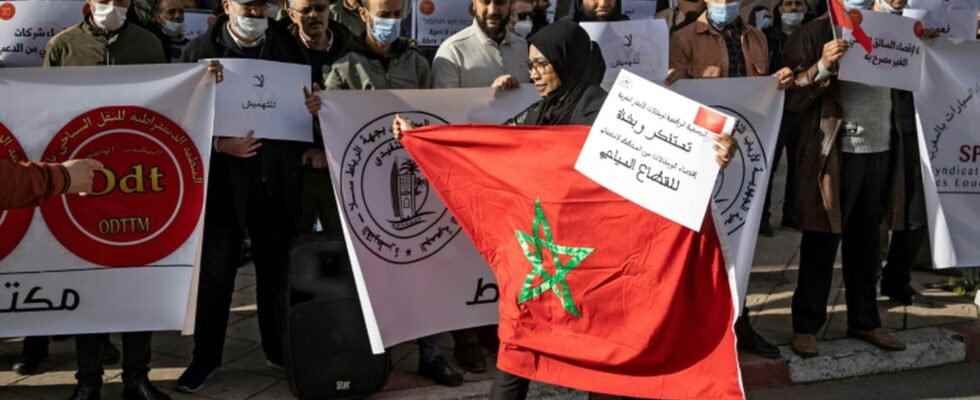The Moroccan government has decided to reopen the airspace from February 7 to flights to and from the country, after more than two months of closure, according to a statement released Thursday evening by the MAP agency.
Authorities were under pressure from a bankrupt tourism sector and Moroccans stranded abroad to unblock borders closed since November 29 due to an outbreak of the Omicron variant.
“This decision comes in accordance with the legal provisions relating to the management of the state of health emergency and following the recommendations of the scientific and technical commission and taking into account the evolution of the epidemiological situation in the kingdom”, indicates the press release.
“To support the implementation of this decision, a technical commission is currently examining the measures to be adopted at the border posts and the conditions required for travelers, which will be announced later”, specifies the same source.
The government also extended Thursday the state of health emergency in force since 2020, throughout the territory, until February 28.
The border closures have hit the tourism, hotel and catering industry hard, a vital sector for the kingdom’s economy.
Despite the announcement of a two billion dirham (190 million euro) tourism support plan, tourist operators demonstrated on Wednesday across the kingdom to demand the reopening of borders.
“The closure deals us a very hard blow since we are now at a standstill while our expenses are still fixed,” testified to AFP Mimoun Azzouzi, owner of a travel agency in Temara, near Rabat.
“The people want the borders to reopen,” chanted hundreds of protesters in Marrakech, the tourist capital, according to videos posted on Facebook.

Members of the National Association of Travel Agencies of Morocco (FNAVM) demonstrate for the opening of borders, January 26, 2022 in Rabat
© AFP – FADEL SENNA
The closure of airspace has raised strong protests from the large Moroccan diaspora, especially since some private jet companies operated connections to Morocco at exorbitant prices – more than 10,000 euros per passenger for a one-way trip. simple — according to news sites and testimonials on social media.
If the peak of contaminations with the Omicron variant seems to have been reached during the week of January 17 to 23, according to the Ministry of Health, the authorities are nevertheless worried about an increase in cases in intensive care.
– Vaccine factory –
With its 36 million inhabitants, the Maghreb country is banking on its vaccination campaign and “national solidarity” to stem the epidemic: more than 23 million people have received a second dose of vaccine.

Morocco’s King Mohammed VI chairs a launch ceremony for the construction of a Covid-19 vaccine manufacturing plant in the Benslimane region, January 27, 2022.
© Moroccan Royal Palace – –
The authorities’ objective is to immunize 80% of the population, or some 30 million people, with the Sinopharm and Pfizer/BioNTech vaccines.
On Thursday, King Mohammed VI inaugurated the construction site of an anti-Covid vaccine manufacturing plant, which should start production next July, in Benslimane, in the region of Casablanca, the economic capital.
Called SENSYO Pharmatech, this plant will be dedicated to “the manufacture and syringe placement of vaccines (anti-Covid and other vaccines)” and will have “three industrial lines whose combined production capacity will reach 116 million units in 2024” , details the MAP.
This company, in partnership with the Swedish company Recipharm, “will make it possible to ensure the self-sufficiency of the kingdom in terms of vaccines”, according to the agency.

Members of the National Association of Travel Agencies of Morocco (FNAVM) demonstrate for the opening of borders, January 26, 2022 in Rabat
© AFP – FADEL SENNA
The objective is to manufacture between 2022 and 2025 “the active substance of more than 20 vaccines and biotherapeutic products, including three vaccines against the coronavirus, covering more than 70% of the needs of the kingdom and more than 60% of those of Africa. “.
Morocco has already started production of more than three million doses of Chinese Sinopharm vaccine each month. This monthly production should reach five million doses from next month and more than 20 million by the end of 2022.
All rights of reproduction and representation reserved. © (2022) Agence France-Presse
